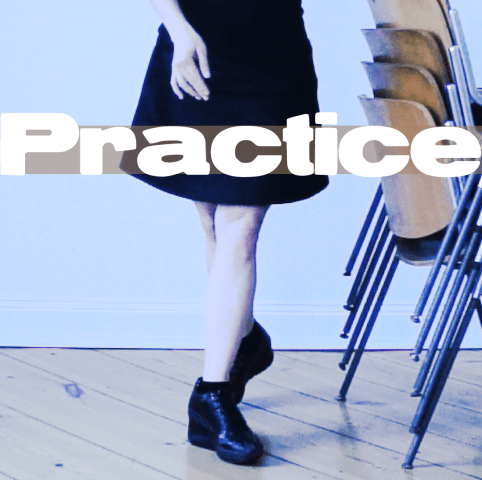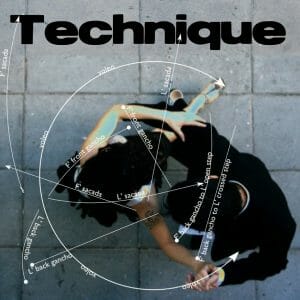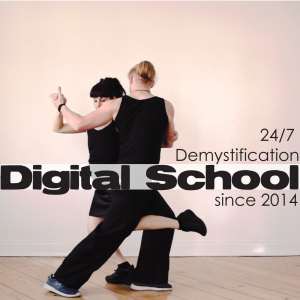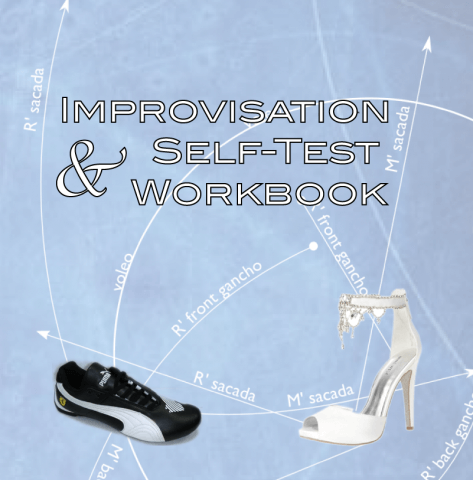 Yesterday I had the wonderful opportunity to meet with Michael Chang, who has been a Dance Sport competitor and coach for more than 20 years. He was Australia representative to the World Professional Championships of 10-Dance in 2009, and has been studying human movement science for the last 6 years in an attempt to understand Dance Sport. He is a PhD candidate in the School of Exercise and Sports Science at the University of Sydney, where he studies at the Motor Control Lab.
Yesterday I had the wonderful opportunity to meet with Michael Chang, who has been a Dance Sport competitor and coach for more than 20 years. He was Australia representative to the World Professional Championships of 10-Dance in 2009, and has been studying human movement science for the last 6 years in an attempt to understand Dance Sport. He is a PhD candidate in the School of Exercise and Sports Science at the University of Sydney, where he studies at the Motor Control Lab.
I had ten questions for Michael about biomechanics. I wanted to be sure I was using the correct anatomical terminology. I learned that these beautiful bodies of ours are very, very complicated. What I learned about the science was stunning. I was expecting Michael to school me on the correct terminology. And in many cases he took a look at me and observed that I was abducting or contracting a muscle I hadn’t noticed.
The hardest thing to learn in Tango (the leader’s forward walk) is actually not that hard to understand in biomechanical terms – and I had already grasped it. But rebote, which is much easier to do, is very hard to understand. And this was my main question for Michael – What is elasticity? And how is it conveyed? My interest in this question is that while many of my students learn this easily, about 1/3 of them struggle to find this sensation. I want instructions that work for 100% of my students and I want to be able to convey concepts like this in a single session.
But I’m going to slow down and take you through the whole conversation, partly because it was fascinating, and partly because this kind of analysis of tango is so rare.
State of the science
In some cases my application of terminology was accurate. In others, I was on the right track, but the muscle function is much more complex than I knew. And to a third set of my questions, Michael laughed and said “That’s a PhD thesis there. No one knows.”
He explained that the fields of Anatomy and Physiology are mostly concerned with physical fitness and injuries. “There are very few people interested in movement.” Dancers have lots of terms for what they do and there are a couple of science books about dance: Neuro-Cognition of Dance and Physics and the Art of Dance.
But most of the concepts are contested — by other dance professionals, and by the science. Michael explained that “there’s the biomechanics – that’s how a movement is done.” Then there’s “motor control”, that’s how the mind controls the body (mostly not by sending instructions to muscles or joints, but by sending instructions for a goal). Then there’s “motor learning”, which is how the motor system learns to make a new movement. What became clear during our conversation is that the science is not conclusive at any of these levels.
We agreed that at beginning levels, biomechanical instructions work. But Michael said that studies suggest that to move a dancer in more advanced improvements, “metaphors and abstractions come back”.
Apparently, there are only a handful of scientists in the world studying dance and, as far as Michael is aware, none are studying Argentine Tango. “I get notified of every single scientific paper in this field.” Which really matters because Michael was incredulous that in tango the “codes of communication” are not developed within each partnership, but are shared across the dance community, so that superlative dances can be had between dancers who have never danced or spoken before. Apparently, tango is different. Michael’s term for this difference is that tango technique is less individualized to the couples.
So on to my questions
- I learned from Michael that my recent emphasis on hip flexion is right on – especially with regard to the mark’s forward walk. Hip flexion does indeed provide stability and power. (There’s more about why below.)
- My emphasis on the oblique muscles for both mark and revel of spiral movements (ochos and voleo-circulars) is also accurate, as the oblique muscles manage rotation around the spine.
- The sensation of “freedom in the free leg” when it is moved by the psoas and Dana Frígoli’s insight that freedom in the free leg is a function of the base is correct. The reason is that muscles work best when their “insertion point” (the place they attach to bone) is stable. Because the psoas connects to the spine, it needs a stable spine. when we’re on one foot, we need to use a lot of muscle in the base leg to stabilize the spine. That’s why beautiful motion of the free leg comes from the strength of the base.
- I was also right about the elasticity of rebote having something to do with stretching the sending leg and abdominal muscles. Although human muscles are not as elastic as other animals’, we do experience elasticity when we stretch a muscle to its limits. This is called “stretch reflex” or the “stretch-shortening cycle”.
Voleos
Where we got stuck was in voleos, marked with non-elastic compression. Michael said that the With voleo involved “power transfer” and “interaction of segments”. The Contra voleo’s explanation, he thought, lay with conservation of angular momentum and rotary momentum. I was a bit crestfallen over this. We seemed to be on a path to high school physics, rather than an accessible biomechanical explanation for my students.
Our bodies are beautiful and powerful in part because they are so sophisticated, but I need straightforward instructions for using them.
For the last few months, I have been committed to rearticulating the concept and terminology of “compression”. Because it’s not anatomical. I was hoping Michael could help me, but in the meantime, I had figured something out: Compression only works when I flex (or extend) my knee and hip joints equally. I had surmised that the power came from the fact that the muscle pairs (hamstring and quadriceps) were both in concentric contraction or both in eccentric contraction. I was close.
After more discussion and dancing, we came back to the voleo compression. I had been asking about concentric and eccentric contraction. Eccentric contraction (the muscle working while it is lengthening) is stronger than concentric contraction, 40% stronger.
But Michael explained that eccentric contraction is relatively hard to identify outside of exercise classes. “It is hard to determine when and where concentric and eccentric contractions are occurring in dynamic tasks without doing experimental biomechanical studies.” We know that eccentric contractions occur all the time to absorb power and decelerate motion. Michael gave three important examples: when the muscle is working against gravity, decelerating a rapidly moving limb, or absorbing the power of a partner.
Standing flexion is an example of fighting gravity. When we stand upright with straight legs, our muscles don’t work much to hold us there. Instead, ligaments hold the body in place. But once we start to flex, anatomical structures like ligaments let go and gravity would fold our joints and take us promptly to the ground were it not for the work of the muscles in eccentric contraction working to hold the leg joints in their current state of flexion. This is why slight flexion of the base leg is such a powerful method for increasing stability. It turns the muscles on!
As we press into what I had been calling compression on our standing leg, our knee and hip joints approach 90 degree flexion. The approach to 90 degrees means that both sets of muscles are approaching what is called, confusingly, their “resting length”. That’s the length at which the muscle has the most strength (due to the connections of the proteins, but I’m not going to get into that).
So the intensity of what I have been calling “compression” is real: If we flex the hip and knee joints equally– the hamstrings and the quadriceps both go into eccentric contraction, fighting gravity. Both sets of muscles are also at their strongest length. Finally, because we’ve got both sets of muscles going, we’ve got co-contraction. So there are three aspects to the strength of this movement. No wonder it generated so much force that it travels through both bodies and can send the revel’s leg high in the air.
So, what about ‘compression’?
- I have decided to change the terminology to co-contraction. The main reason is that, like the word ‘revel‘, the terminology serves as a reminder of what we need to do, specifically that we need to create a dual movement, flexing two joints equally to create powerful muscle activation.There are two different applications of compression/co-contraction:
- Elasticity/rebote controlled by the sending leg: All three joints of the sending leg are extending. Various muscles hit the point of stretch-reflex.
- Elasticity/rebote controlled by the receiving leg (alteración): All three joints of the receiving leg are flexing. Co-contraction of eccentric contractions of quadriceps and hamstrings. When the contraction is released, we create an elastic reaction. That’s because, according to Michael, “the stretch reflex is dependent on the acceleration in the muscle. It will be involved in many movements which go one way and then rapidly go the other way.”
Notice that when we create co-contraction with flexion in the receiving leg we have so much power that we can make the elastic release very slowly. It may not feel elastic, just smooth. That’s the With voleo. It’s smooth because of the strength we are working with as we move out of the co-contraction.














